An inguinal hernia can be categorised into two types: Direct and Indirect hernia. A direct hernia develops due to the weakening of the abdominal muscles and is most common in adult males. It is typically caused due to ageing, excess straining and stress.
Researchers have found that direct hernias in females are substantially less typical to occur. From my knowledge, this may be due to the uterus’s round ligament located within the inguinal canal, which may serve as a second barrier to the muscle. Additionally, in females, the inguinal canal is similarly smaller.
Dr. Siddharth Gupta, MD
Indirect inguinal hernia commonly develops in children due to a defect in the abdominal wall since birth. If an opening on the inguinal canal doesn’t get closed, there are chances that a part of the intestine or other developing organs can protrude, causing a hernia.
Did you know indirect inguinal hernias are common in infants and males? Researchers have found that up to 4% of all newborns, 2% of boy newborns, and 1% of girl infants are affected with indirect inguinal hernias. Your testicle starts above the lower abdominal wall, travels via the inguinal canal, and terminates in the scrotum. Since it is a pre-existing opening that is easily reopened, the area where your testicle passes through is more prone to hernias. Additionally, it may not be closed completely entirely during development.
Dr. Rajeev Singh, BAMS
| Different Factors | Direct Hernia | Indirect Hernia |
| Causes | > Ageing > Stress or strain > Previous surgery in the lower abdomen > Chronic coughing > Injury | > Heavy lifting > Constipation > Being overweight > Birth defect – When the inguinal canal opening fails to close completely by the time of birth |
| Symptoms | > Swollen lump > It may be felt in the abdominal wall and cannot descend into the scrotum > A bulge from the posterior wall of the inguinal canal > It is a circular, symmetric swelling at the external ring > Groin pain | > The bulge can descend through the scrotum > It passes through the inguinal canal > It appears as an elliptical swelling > The bulge is behind the fibres of the external muscle > Discomfort or pain while standing for too long. |
| Diagnosis | > Physical examination. The doctor will be able to identify a bulge in the groin as a hernia. > He/she may ask you to cough or strain while standing to examine the bulge properly > Imaging tests may be required, such as CT, Abdominal X-Ray and Ultrasound. | Imaging tests like: > Abdominal X-rays to take a picture. > Computerized tomography (CT) scan helps to see blood vessels and blood flow on the X-ray. > Ultrasound to get an image of your internal body organs. |
| Treatment options that can be advised by doctors | > Open surgery is done by making a large incision to place the hernia back in its place and repairing the abdominal wall with a mesh. > Laparoscopic surgery is done by making a few small incisions to insert a device and look inside the abdomen to treat the hernia. | > Open surgery > Laparoscopic surgery |
| Prevalence | > Common in older people, mostly above 40 years of age > It is a more common condition in males. | > It is usually seen in children, and young adults > Men are at a higher risk of developing this type of hernia than women |
| Complications | > If the hernia is trapped in the weak abdominal wall, it can obstruct bowel movements > Severe pain, nausea, vomiting > Inability to pass gas > The hernia bulge may turn dark in colour. | > Pressure on surrounding tissues due to enlargement of the hernia. > It can extend into the scrotum, causing pain and swelling. > Strangulated Hernia. This occurs when the blood flow to part of your intestine is cut off. It affects bowel tissue and can be a life-threatening condition which requires immediate surgery. |
Both direct and indirect inguinal hernias are very similar to each other, which is why you may confuse the symptoms of the two conditions. If you notice a lump around the abdomen, have groin pain and experience difficulty in passing stools or gas, book an appointment with a proctologist or general physician. He/she shall examine you, ask about your symptoms and tell you the difference between direct and indirect hernias. Appropriate treatment may be decided for your condition after a few diagnostic tests are done. Hernias have only one treatment option, which is surgery. There are no other alternative medicines, and leaving the conditions untreated for a long time may cause other complications. Never self-medicate and follow the doctor’s advice.
Also Read: Groin Pain When Walking: Understanding the Causes and Solutions
Disclaimer: The information provided here is for educational/awareness purposes only and is not intended to be a substitute for medical treatment by a healthcare professional and should not be relied upon to diagnose or treat any medical condition. The reader should consult a registered medical practitioner to determine the appropriateness of the information and before consuming any medication. PharmEasy does not provide any guarantee or warranty (express or implied) regarding the accuracy, adequacy, completeness, legality, reliability or usefulness of the information; and disclaims any liability arising thereof.
Links and product recommendations in the information provided here are advertisements of third-party products available on the website. PharmEasy does not make any representation on the accuracy or suitability of such products/services. Advertisements do not influence the editorial decisions or content. The information in this blog is subject to change without notice. The authors and administrators reserve the right to modify, add, or remove content without notification. It is your responsibility to review this disclaimer regularly for any changes.
Hernia is a condition that can affect anyone but is more common in males. When there is a weak spot in your muscles or fatty tissues, the internal organs are able to push through this opening. This results in a bulge or swelling on the skin and may be accompanied by severe pain. There are many types of hernias, but the most common one is an inguinal hernia. This hernia occurs when the intestines push through the inguinal canal near the inner part of your thigh, in the upper groin region.
There are many types of other hernias which may be less common than an inguinal hernia, such as Hiatal hernias, umbilical hernias, incisional hernias and more. Some hernias will be small and not have any symptoms associated with them in the beginning. However, most hernias will get worse with time and require some kind of medical attention. If you have a hernia, you need to speak with your doctor and find the best course of action for your case:
Did You Know?

Fruits like bananas, apples, pears and melons are great sources of nutrients and fibre. The increased fibre intake will be necessary for smoother bowel movements.

Spinach, green peas, methi (fenugreek), water spinach and mustard leaves are some excellent leafy green options for fibre. These greens are also packed with vitamins and minerals compared to other foods.
Carrots, sweet potatoes and cucumber are three high-fibre veggies to add to your diet. With more fibre, you can decrease your risk of constipation and ease the pressure that your intestines undergo.
Over the years, I have found that it is beneficial for patients with hernias to eat their meals at least three to four hours before lying down. I would also suggest to perhaps avoid bedtime snacks. When you lie down immediately after eating or consume snacks before bed, it can increase the pressure in the abdomen, potentially worsening the symptoms of a hernia.
Dr. Smita Barode, BAMS
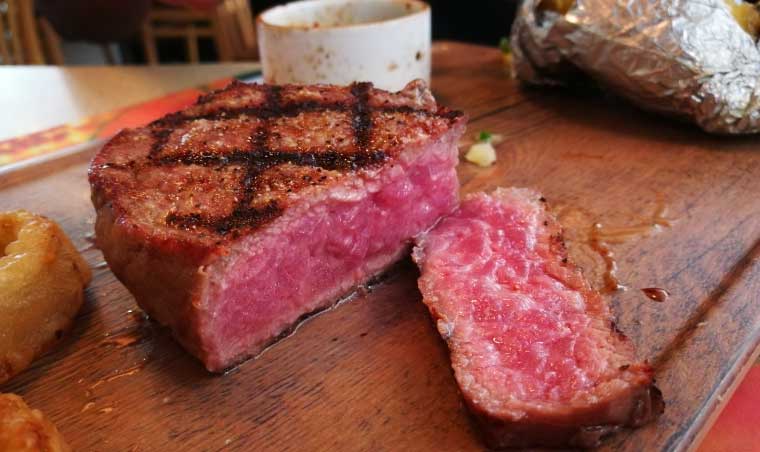
Protein is an essential nutrient for the repair and building of tissues in the body. Many animal sources of protein come with loads of unhealthy fats, which can contribute to obesity. Increased weight can stress out your digestive system and strain your hernia further. Lean protein like skinless chicken, white fish, yoghurt, beans, lentils, peanut butter and low-fat milk can increase your protein intake without boosting your fat levels.

Certain oils contain high levels of trans fats that are very unhealthy for your overall health. Unhealthy cooking oils may also be involved with digestive issues and heartburn, both of which are bad news for people with a hernia. Opt for healthier oils like olive and coconut oil wherever possible.

Whole grains are the best alternative to refined grains, flour and food items. Refined grains and the flour produced from them are often called empty carbs since they bring no fibre to your diet. Whole grains, on the other hand, are rich in nutrients and fibre.

Oatmeal is a grain with numerous health benefits, including a high fibre content. But oatmeal also benefits people with a hernia by being a low-acidic food. Acidic foods can increase the symptoms you face, but with oatmeal, you can decrease the chance of this occurring.

Water is required for nearly every cell in your body to function normally and is especially essential for smooth digestive function. Make sure you drink enough water every day without drinking too much at one time. Too much water in a short period can result in bloating and this may be painful if you have a hernia.
Nobody enjoys bland food, but when you have a hernia, you need to pay extra attention to the seasoning you use when preparing your food. Do not add excessive amounts of spicy, acidic powders since these can increase your pain when passing stools.
In my experience, I have observed that avoiding acidic condiments like tomato sauce can be beneficial for patients with hernia. These foods have the potential to irritate the hernia and worsen symptoms such as heartburn and regurgitation. Based on what I’ve seen, I would advise you to opt for non-acidic alternatives to minimize discomfort and support your overall digestive health.
Dr. Rajeev Singh, BAMS
Eating large meals puts sudden pressure inside your stomach, which may result in more pain from your hernia, particularly Hiatal and umbilical hernias.
Citrus Foods can increase your risk of acidity and similar conditions (like GERD), which will affect your hernia symptoms.
Excessive consumption of alcoholic beverages can lead to a host of health issues as well as digestive problems. Alcohol is a diuretic, meaning it makes your body pass more water than normal. You may end up dehydrated due to this, which will negatively impact your digestive system and any associated hernias.
Although most people can benefit from more fibre in their diet, some foods contain excessive amounts of this nutrient. Mushrooms, cabbage, broccoli, onions, garlic, carbonated beverages and chewing gum may all contribute to higher levels of fibre and gas. In general, these should be avoided or limited as much as possible.
Wherever possible, opt for sauteing, boiling and baking rather than frying your food. Not only will this decrease your fat intake, but it is also healthier for your digestive system.
Did you know that eating a large meal can sometimes contribute to the occurrence of strangulated hernias? Strangulated hernias involve a segment of bowel becoming trapped and experiencing reduced blood supply, and the increased volume from a large meal can potentially aggravate this complication. So, it’s important to be mindful of portion sizes and maintain a healthy diet to minimize the risk of hernias.
Dr. Siddharth Gupta, MD
Also Read: Groin Pain When Walking: Understanding the Causes and Solutions
Managing your diet when you have a hernia depends on a few key factors – smooth digestion, avoiding certain unhealthy foods and limiting your risk of stomach problems. Eating healthy foods to support your body’s immune system and cut down on inflammation may also prove useful. Remember, diet alone cannot solve your hernia issues, but it can allow you to cope with the condition better. For any new changes to your diet or lifestyle, speak with your doctor.
You should avoid any foods that can upset your stomach and aggravate constipation or bloating, such as spicy foods, citrus foods, oily fried foods and foods without fibre.
Fibre-rich, low-acidic foods like apples, pears, carrots, sweet potatoes and leafy greens are good dietary choices when you have a hernia.
Alcohol, smoking and diabetes have all been linked to the weakening of the cremaster muscle (which supports the testicle). This may worsen your existing hernia or increase the risk of developing one.
Yes, walking strengthens your body, especially your muscles and can encourage fewer symptoms. Walking may also be part of your recovery after hernia surgery.
Disclaimer: The information included on this site is for educational purposes only and is not intended to be a substitute for medical treatment by a healthcare professional. Because of unique individual needs, the reader should consult their physician to determine the appropriateness of the information for the reader’s situation.
Hernias are caused when a weakness in the muscle or tissue of the body allows an internal part of the body to push through. Typically, a hernia occurs between the chest and hips. There are few or no symptoms initially. However, you may notice swelling or a lump in your belly (abdomen) or groin.
3 of the most common types of hernia are:
Exercise can be safe for some people with hernias. It may be safe to exercise with a hernia, but caution should be taken. To prevent additional stress on your hernia, focus on activities that won’t strain that area. It is not recommended to perform exercises or lift routines that strain or pull the abdominal area when suffering from abdominal hernias. Nevertheless, there are several exercises to avoid. Working out safely begins by knowing which exercises to avoid.
Furthermore, working out with a qualified personal trainer or an accredited physiotherapist is wise. The trainer or physiotherapist can help you with safe exercises. Consult your doctor before exercising when you have been diagnosed with a hernia or recovering after a hernia operation.
Some evidence is that exercise or yoga can help with or speed up the healing process after Hernia surgery. Exercise and yoga are recommended by physicians and physical therapists for a healthy lifestyle. Understanding the right exercises and the time to begin them from your doctor is important.
Use the thigh muscles during Pillow Squeeze. Begin by lying flat on the floor and bending your knees. Inhale deeply while holding a pillow between your knees. As you exhale, squeeze the pillow gently with both knees. Make sure to repeat this exercise 20 times daily.

Keeping your knees in the same position, exhale while sitting with a pillow between them. Lift your waist and rest your arms on the floor to provide support. Try to stay as straight as possible from your shoulders to your knees. Take in as much air as you can. Sit with a pillow between your knees and return to the initial position. Repeat 20 times daily.

Bend your knees and lie down flat on the floor. Your head and chin should be at the same level. Then, raise one leg up, keeping the other leg bent. Try wrapping a towel around your foot and pulling the lifted leg towards yourself. Try to stretch your hamstring muscles until they feel a bit stretched. Hold that position for at least 30 seconds. Then go back to the starting position. Perform this exercise 10 times a day with each leg.
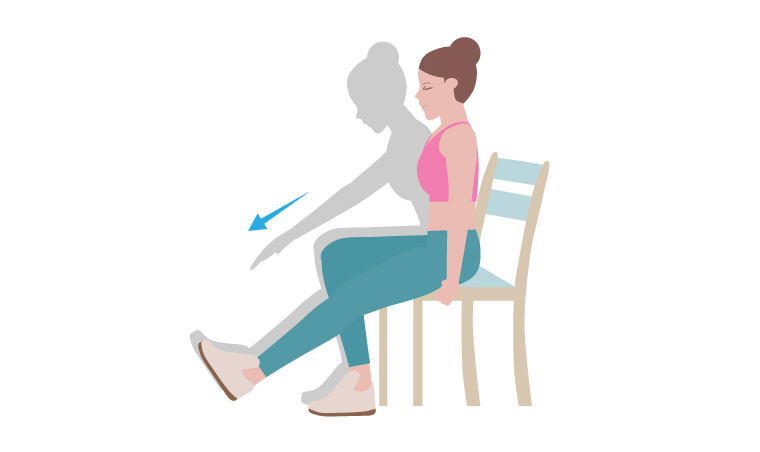
Keep your knees bent and inhale as you lie flat on the floor. As you exhale, open one knee sideways. Bring it as close to the floor as possible. Now bring the knee back. Proceed in the same manner with the other knee. Do this five times per day. Maintain a straight body position during the exercise.
Keeping your feet apart, bend your knees in the same position. Inhale as you hold your arms straight out in front of you. Inhale slowly as you roll over your hips on your right side. Bend both knees sideways. Do the same on the other side. Repeat this exercise ten times a day, then increase to 20.
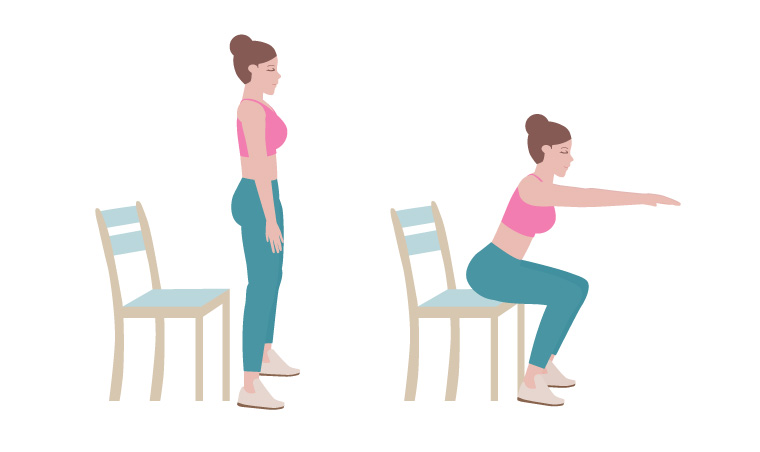
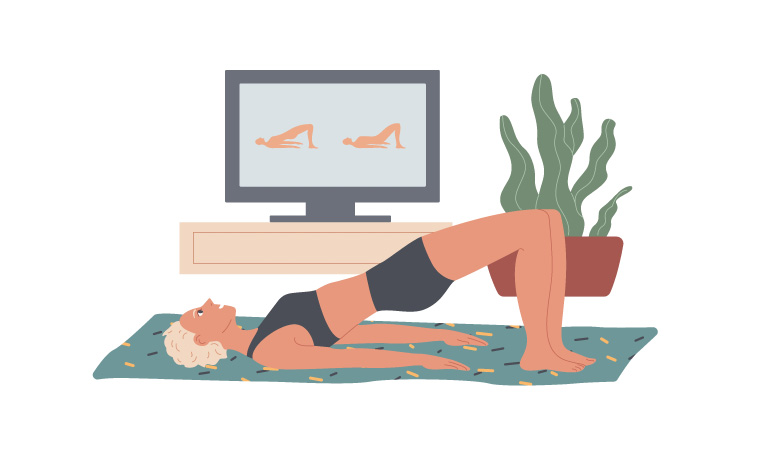
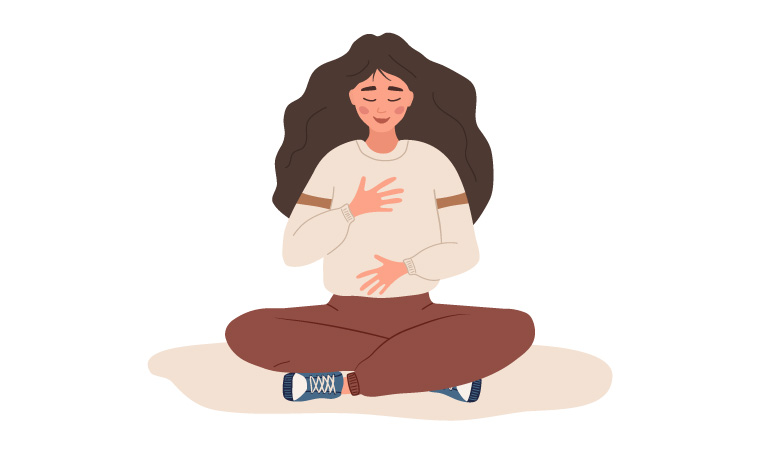
To be done only after discussing with the surgeon)
In the aftermath of surgery, it is normal to feel some pain. In particular, after abdominal surgery, deep breathing can be quite painful, which makes people breathe very shallowly. Sometimes, the inability to expand the lungs properly can lead to infections in the bottom of the lungs. You should therefore take a few conscious deep breaths throughout the day. You should also use controlled coughing to rid yourself of phlegm or sputum. To aid in coughing and clearing the lungs properly, you can hold a pillow or towel near the surgical wound to provide some support.
Also Read: Castor Oil in Belly Button: The Science and Benefits Explained
Certain exercises and activities should be avoided after your hernia surgery or if you have a hernia:
When exercising with a hernia, keep certain tips in mind to make sure you remain safe. One of the most important steps is to avoid the strenuous exercises listed above. As part of your exercise routine, make sure that you include aerobic exercises, glute bridges and postural strengthening exercises.
Be sure not to overdo it. You should be gentle with yourself until your hernia has been repaired.
If you do it correctly, exercise will help you in managing your hernia better and prepare you for surgery if necessary. After surgery, it is definitely an important part of your prevention plan
You always run the risk of worsening hernias when you begin exercising. Hence, patients must seek treatment for a hernia before participating in intense exercise. Every person is different therefore, it is mandatory to discuss with your doctor the right time to begin exercises and the type of exercise one should engage in.
It is safe to exercise with a hernia, however, there may be risks to making your hernia worse, if done correctly, exercise can help you cope with your hernia better. Ensure to be careful and not overdo your exercises or perform any strenuous exercises. Consult your doctor before doing any exercise.
The benefits of exercise may help you manage many chronic health conditions and alleviate the symptoms of a hernia. However, you must be careful as some exercises can cause strain on your affected area and may worsen your hernia.
Core exercises such as crunches, planks, sit-ups and some pilates, in other words, exercises that are more advanced should be avoided. Performing heavy lifting exercises, including deadlifts and squats, at a high intensity, can result in your hernia getting worse. In addition, avoid sports with high impact or contact too. Avoid bending down and lifting anything heavy at home.
Yes, walking is a highly recommended exercise for a person suffering from Hernia. You can go for short walks unless advised otherwise by your doctor.
Disclaimer: The information included on this site is for educational purposes only and is not intended to be a substitute for medical treatment by a healthcare professional. Because of unique individual needs, the reader should consult their physician to determine the appropriateness of the information for the reader’s situation.
Hernia is a condition that occurs when an internal organ or tissue pushes through a weak spot or region in the covering muscle or tissue that is supposed to contain it. For example, one of the most common types of hernias is when the intestines (internal organs) push through the lower abdomen muscle wall (surrounding tissue). This produces a bulge in the lower abdominal area.
A hernia may not be serious immediately, but many hernias tend to worsen with time and will require surgical intervention. Anybody can get a hernia regardless of age or gender, although it may be more common in older adults and those who are overweight. Most hernias occur within the abdominal cavity, between the chest and the hip.
It produces a noticeable lump or bulge that can be pushed back in or that can disappear when lying down. Laughing, crying, coughing, or straining during a bowel movement or physical activity may make the lump reappear after it has been pushed in. Speak with a doctor immediately for an appropriate diagnosis.
Home remedies for hernia only help in strengthening the muscles and preventing repeat herniation post surgery. Surgery is the primary treatment of hernia.
Dr. M.G. Kartheeka, MBBS, MD
A hernia can be caused due to several reasons. The weakening of the enveloping tissues or other muscles due to ageing, strain, obesity, or birth defects can make it easier for internal organs to push through.
Risk factors for hernia may also include pregnancy, being overweight, straining when going to the toilet, forceful and regular coughing, or giving birth. Additionally, some hernias may be caused after a surgical procedure, while other hernias like Hiatal hernias do not have causes that are fully understood.
Did you know?
There are many places you can get a hernia, here is a list of some of the most common types:
This is the most common hernia. The inguinal canal goes from the abdominal region to the lower groin. The weakening of tissues in this region may cause the intestines or tissue from inside to push through and create a bulge at the top of the inner thigh.
A femoral hernia is a rare type of hernia in the groin region that occurs over the femoral canal in the upper thighs. This type of hernia is more likely in older women.
When the tissues or muscles near the belly button (navel) become weakened, the internal tissue can push through and make a bump in that area. This is known as Umbilical Hernia. If the hernia is detected above the navel but below the breastbone, it is known as an epigastric hernia. This hernia may be noticed more often in young children.
Inside your body, your digestive organs, like the intestines, are kept separated from the upper chest cavity due to the diaphragm. The diaphragm is a muscle within your chest that keeps the organs separate and organized, but sometimes the diaphragm can become weakened, damaged or have defects from birth. This leads to parts of the stomach pushing through and entering your chest region and is known as a hiatal hernia. In some people with severe defects, not only the stomach but multiple organs from the tummy region are free to push into the chest area. This is called a diaphragmatic hernia.
Incisional hernias occur at the site of an incision or cut, usually made for surgical purposes. After the surgery, the body may not heal the muscle tissue properly, which may lead to a weak point developing. This makes it easier for a bulge to form and the internal organs to push through. Some types of incisional hernias are called ventral hernias.
Avoiding too much straining of your abdominal muscles after abdominal surgery and allowing your muscles to heal completely goes a long way to prevent the development of a hernia.
Dr. Ashish Bajaj, M.B.B.S., M.D.
A hernia can be easily noticed since they typically occur in common places and have similar symptoms. In most cases, you will need to speak with your doctor immediately after finding a hernia. Here are a few key signs to watch for:
Home remedies do not cure hernia. These may help reduce the risk of hernia in some people. Consult a doctor for diagnosis and treatment of hernia.
Do not try any exercise or home remedies without your doctor’s consent –
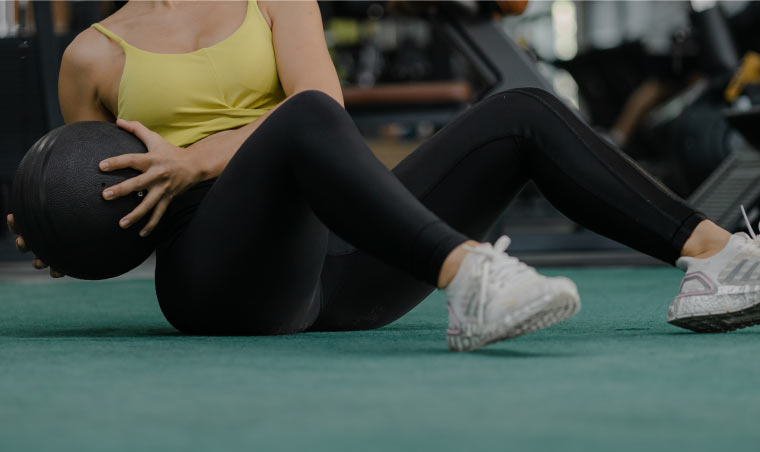
One of the main causes of hernia is strenuous exercise or overexertion. If you are engaged in heavy exercises, cut back and perform easy workouts. People who have suffered from hernia before should refrain from lifting heavy weights. Some of the following exercises can help reduce the hernia-
Light cycling may be considered safe for people with smaller hernias and may also strengthen your muscles. If cycling is causing you more pain, then it should be avoided completely.

Walking is one of the most beneficial and simple exercises to perform and comes with many health benefits. Walking will generally not put additional strain on your hernia (depending on where the hernia is).

Swimming can relieve a lot of pressure, strain and pain due to the buoyancy of the water. Speak with your doctor and find out whether this exercise is appropriate for you. You will need to avoid strenuous laps and focus on gentle pool wading to get any benefit from this exercise.

Yoga may also support abdominal muscle strength, similar to the previously mentioned abdominal exercises. Avoid any yoga poses that increase your pain and discomfort and this may worsen your hernia.
Smaller meals can be effective in decreasing the symptoms associated with hernias that involve the intestines. The less pressure you put on your stomach internally, the easier it is for you to digest your food. This will ensure that your digestive system is not under stress which may benefit you by limiting your hernia pain.

An ice pack on the hernia will act as a quick inflammation reliever when your hernia is causing too much discomfort. Always cover the ice with a soft cloth and do not leave it on for long periods.

With more fibre, your stools will be easier to pass and you won’t need to strain. Softer stools can also decrease the risk of constipation.

Obesity and being overweight may increase your risk of a hernia or worsen your condition if you already have one. The more you weigh, the more pressure is placed against your muscle walls. Speak with your doctor about safe ways to lose weight.
Also Read: Castor Oil in Belly Button: The Science and Benefits Explained
If your hernia is not causing you any symptoms like pain or bowel issues, your doctor may not immediately recommend surgery. However, in most cases, a hernia will be accompanied by several serious symptoms that require immediate medical attention. Consult a doctor if you notice the following:
Hernias usually become larger and more severe with time. A strangulated hernia is when the hernia bulge cannot be pushed back inside and becomes trapped within the muscles. This is a dangerous complication. Most hernias are surgically fixed by putting the internal organ back in its place and then strengthening the weak or damaged muscle tissue. Do not delay treatment.
If you suspect that you might have a hernia, speak with your doctor immediately. Even if you do not yet have any symptoms, your doctor will need to monitor your situation and plan for your future. Hernias can be extremely painful to manage and live with and luckily there are several surgical options available. Be sure to check with your doctor what instructions you need to follow to manage your hernia before and after surgery.
Ans. Most hernias occur due to a combination of two factors occurring at the same time – internal pressure of the organs and tissues + the weakening or opening of muscles or other tissues. This leads to the internal tissue pushing through the outer protective layers and creating a bulge that is easily visible.
Ans. The first signs of a hernia are usually a bulge, swelling, or bump in the belly, upper and inner thighs or upper groin that is accompanied by sharp pain Or can be painless too.
Ans. A hernia is usually a serious issue unless it is small. Even small hernias eventually turn into serious medical conditions; however, larger ones typically require urgent medical attention and will have more painful symptoms.
Ans. No, most hernias do not go away on their own and will require some kind of medical attention eventually.
Disclaimer: The information included on this site is for educational purposes only and is not intended to be a substitute for medical treatment by a healthcare professional. Because of unique individual needs, the reader should consult their physician to determine the appropriateness of the information for the reader’s situation.